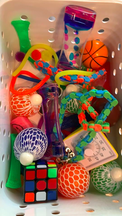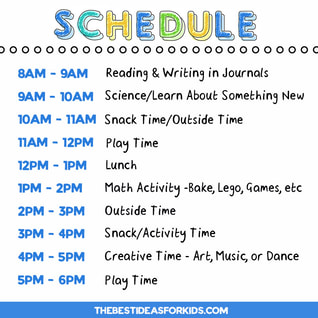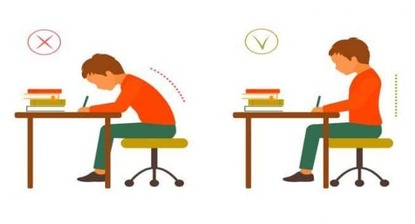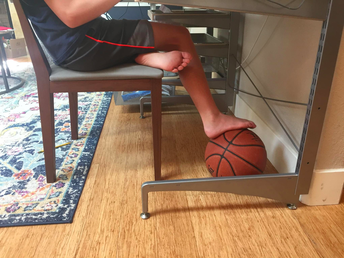|
It’s no doubt that for most families, school is looking very different this year. With at-home learning becoming more and more common, many parents are wondering how they can optimize their child’s learning experience and support any additional challenges their child may experience. Below are some tips & tricks you can try at home to manage the challenges of virtual learning and keeping your child focused and engaged in schoolwork throughout the day! Workspace Seating: Does your child tend to slouch in their seat or do they have trouble sitting still in their chair? Proper ergonomic seating is one of the most overlooked areas when it comes to improving your child’s attention and function when completing tabletop activities. Take a look at the picture below: The best sitting posture has the hips, knees, and ankles at a 90 degree angle, both feet flat on the floor and the table at elbow height. One helpful trick is finding a slightly tilted surface or a tilt table desk. This will prevent your child from looking down or hunching forward as much. If you don’t have adjustable chairs or tables, you can modify your child’s workspace with everyday items to achieve a desired posture (i.e. make a footrest by duct taping a sturdy box or yoga block to the chair’s legs, use a firm cushion/phonebook if the table is too high, roll a towel at their lower back for lumbar support, etc.) If your child tends to fidget, slouch back, wiggle, or fall out of their seat, try tying an exercise band around the front chair legs that they can kick. If this doesn't work, having your child sit on a wiggle seat or wedge, and/or placing something (e.g. ball or wiggle seat) under their feet may help. This will help provide the sensory input they need to maintain attention and focus.  Sensorimotor Breaks: Offer a fidget toy and include frequent sensorimotor breaks into your child’s schedule. Not only are they fun and break up your child’s day, sensorimotor breaks provide opportunities to improve strength, balance, coordination, focus and attention, behavior, sensory processing, and problem-solving skills. Gross motor movements that involve larger muscles of the body (e.g. jumping, climbing, lifting, pushing, and pulling) are especially helpful for improving concentration before completing schoolwork. Find some examples of activities below:
 Visual Schedule: Create some type of flexible, consistent schedule your child can see and clearly understand. The key word is flexible, because real life happens! Though certain activities may change between days, having a relatively consistent routine and an expectation of what the day will bring can help keep children more regulated and prevent meltdowns. Make the schedule more interactive by having them “check off” the tasks completed throughout the day. Adding stickers to the schedule and letting your child help create it is more fun and make it more likely that your child will follow it. What works for your child may not work for another so it can take some experimentation with these ideas. This is a challenging time for parents and children but we hope this information will give you the tools to make the best out of a difficult situation. Remember that children learn through PLAY, and your child’s at-home learning doesn’t have to be sitting at a desk all day- get creative, be realistic, give yourself a break-- and get outside!
5 Comments
|
A2 Therapy WorksMonthly tips, tricks, and activity ideas from our therapists! Archives
March 2022
Categories |



 RSS Feed
RSS Feed